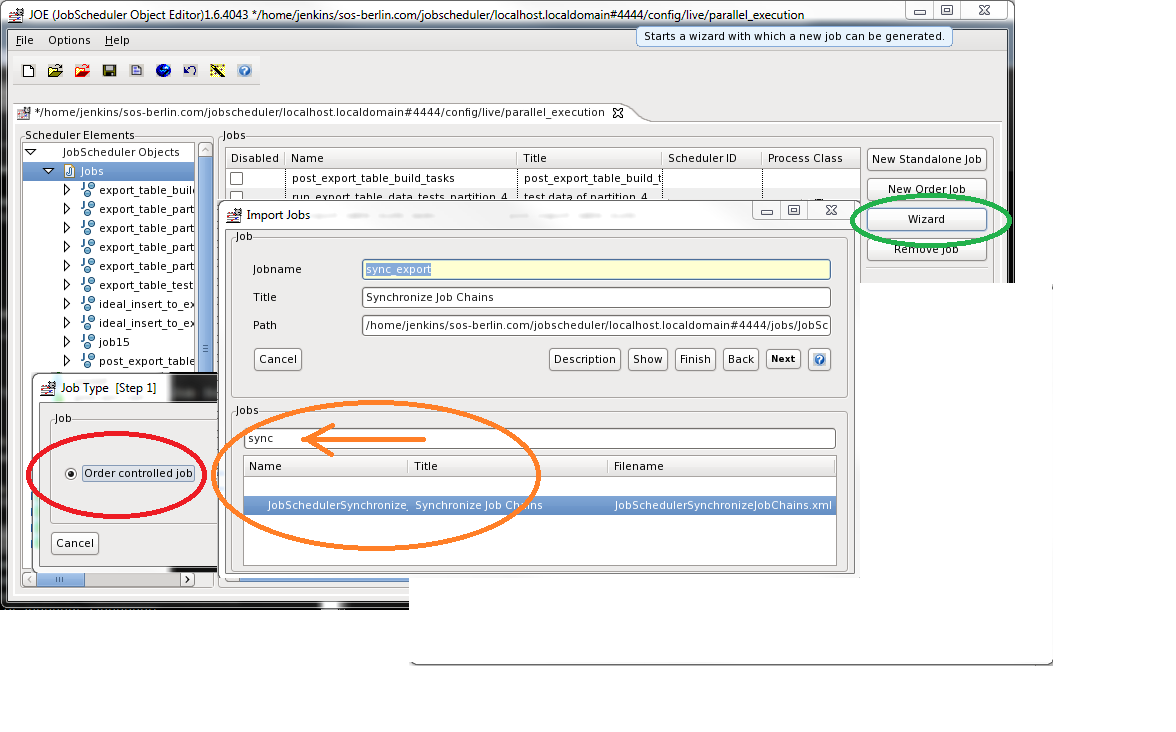Scope
The JobSchedulerSynchronizeJobChains (Sync) Job is is a JITL Job that used to synchronize the execution of Jobs in different Job Chains. See the Examples - Jobs, Job Chains and Orders article for examples of its use.
The Sync Job can also be used to join up the execution of parallel child segments of a Job Chain in JobScheduler versions 1.11.3 and older but suffers from performance issues. See the How to Execute Jobs in a Job Chain in Parallel article for more information.
The JobSchedulerJoinOrders (Join) Job is available for JobScheduler 1.11.4 and newer for joining up the execution of parallel child Job Chain segments. This Job is significantly faster than the Sync Job and can be used as a plug-in replacement for the Sync Job in existing Job Chains after an update of the JobScheduler to version 1.11 4 or newer. See the How to Execute Jobs in a Job Chain in Parallel article for more information.
Implementing the sync job
Use the Wizard from JOE to implement the sync job.
A ready to use template for a sync job comes with JobScheduler in JITL - JobSchedulerSynchronizeJobChains.
To use the template
- navigate in JOE to the JobScheduler Jobs register .
- Click the button Wizard.
- Choose Order controlled job in the next window.
- Next is the window Import Jobs. Provide the name for the new sync job in field Jobname.
- The JITL templates show up in the bottom section of window Import Jobs, marked orange in the image. You have to search the template JobSchedulerSynchronizeJobChains in the drop-down menue. The orange arrow indicates the input field for a search string. If you enter the search string sync the template JobSchedulerSynchronizeJobChains will be displayed.
- Choose template JobSchedulerSynchronizeJobChains by clicking on it. The standard title Synchronize Job Chains appears in field Title and the complete path of the template in field Path.
- Press the button Finish. A window with the XML code of the new sync job shows up. Close that window, you may mark Do not show this window in the future.
The new sync job is now in the Jobs register and ready to use.
See also:
- See the JobDocu of job JobSchedulerSynchronizeJobChains.
- Examples of use for a sync job see Examples - Jobs, Job Chains and Orders
